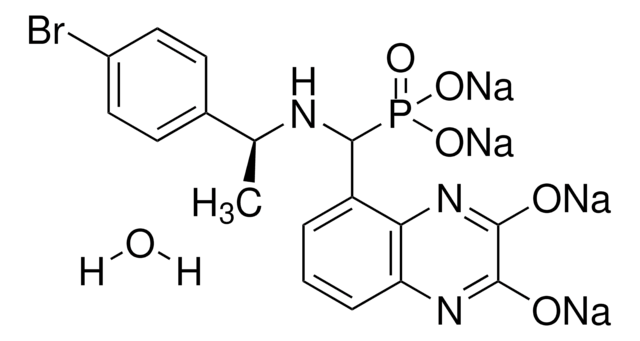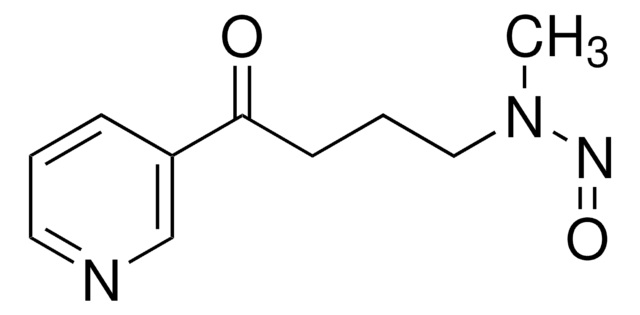I2892
Ifenprodil (+)-tartrate salt
Sinónimos:
α-(4-Hydroxyphenyl)-β-methyl-4-benzyl-1-piperidineethanol (+)-tartrate salt
About This Item
Productos recomendados
temp. de almacenamiento
room temp
Nivel de calidad
cadena SMILES
OC(C(O)C(O)=O)C(O)=O.CC(C(O)c1ccc(O)cc1)N2CCC(CC2)Cc3ccccc3.CC(C(O)c4ccc(O)cc4)N5CCC(CC5)Cc6ccccc6
InChI
1S/2C21H27NO2.C4H6O6/c2*1-16(21(24)19-7-9-20(23)10-8-19)22-13-11-18(12-14-22)15-17-5-3-2-4-6-17;5-1(3(7)8)2(6)4(9)10/h2*2-10,16,18,21,23-24H,11-15H2,1H3;1-2,5-6H,(H,7,8)(H,9,10)
Clave InChI
DMPRDSPPYMZQBT-UHFFFAOYSA-N
Información sobre el gen
human ... GRIN1(2902) , GRIN2A(2903) , GRIN2B(2904) , GRIN2C(2905) , GRIN2D(2906) , GRINA(2907)
Descripción general
Aplicación
- to test the action in a KCl-induced cortical spreading depression (CSD) animal
- to study its effects on electrophysiological properties and spontaneous spikes in neocortical pyramidal cells
- to investigate its therapeutic effects
Acciones bioquímicas o fisiológicas
Características y beneficios
Código de clase de almacenamiento
11 - Combustible Solids
Clase de riesgo para el agua (WGK)
WGK 3
Punto de inflamabilidad (°F)
Not applicable
Punto de inflamabilidad (°C)
Not applicable
Equipo de protección personal
dust mask type N95 (US), Eyeshields, Gloves
Elija entre una de las versiones más recientes:
Certificados de análisis (COA)
¿No ve la versión correcta?
Si necesita una versión concreta, puede buscar un certificado específico por el número de lote.
¿Ya tiene este producto?
Encuentre la documentación para los productos que ha comprado recientemente en la Biblioteca de documentos.
Los clientes también vieron
Artículos
DISCOVER Bioactive Small Molecules for Neuroscience
Nuestro equipo de científicos tiene experiencia en todas las áreas de investigación: Ciencias de la vida, Ciencia de los materiales, Síntesis química, Cromatografía, Analítica y muchas otras.
Póngase en contacto con el Servicio técnico








